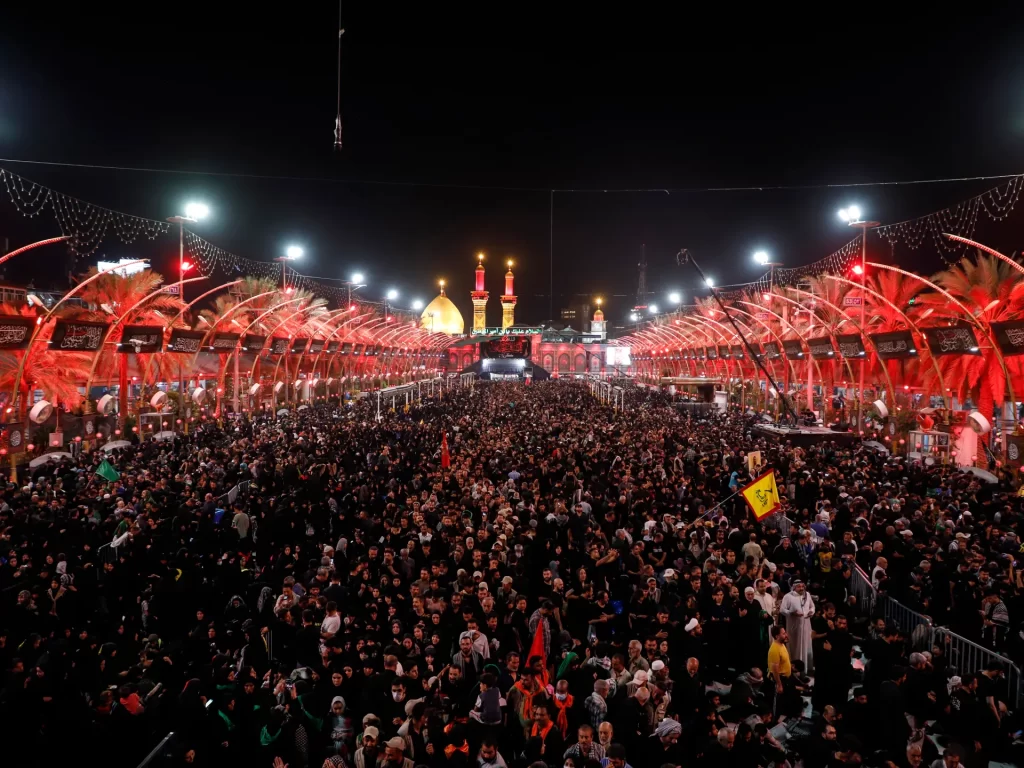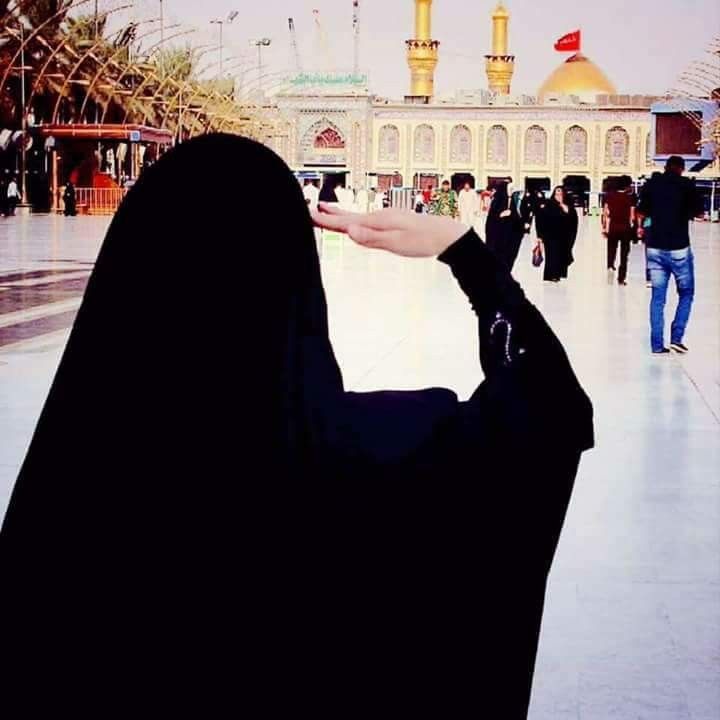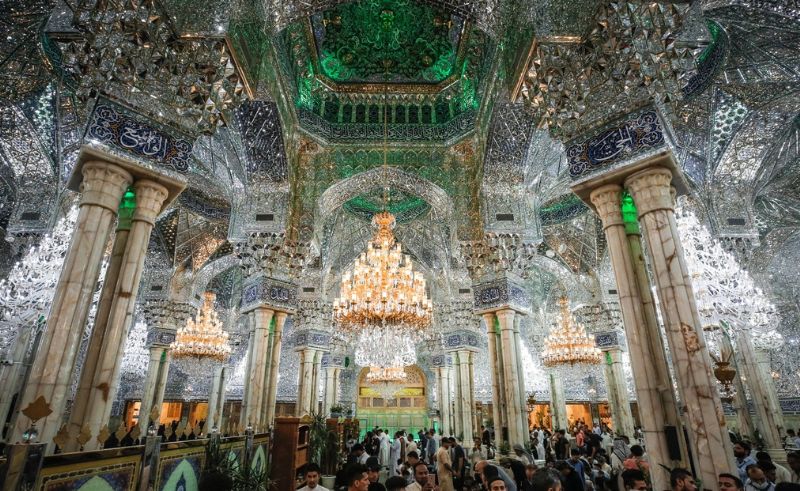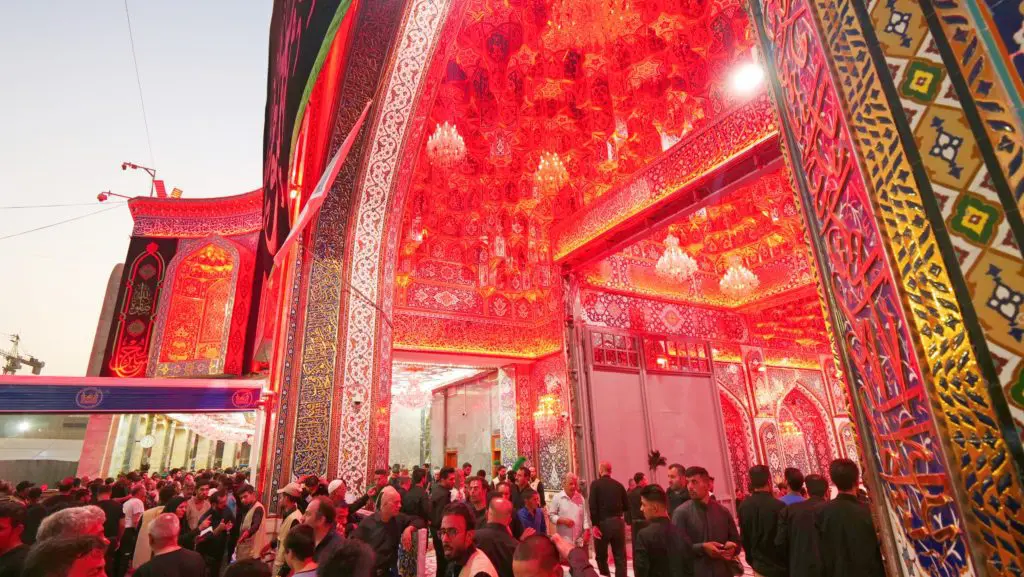Embarking on the sacred pilgrimage to Karbala and Najaf demands meticulous preparation and spiritual readiness. As pilgrims brace themselves for the transformative Arba’een walk, careful considerations can significantly enhance the journey’s experience and ensure their well-being throughout. From prioritizing appropriate footwear to carrying essential provisions, such as cereal bars, for additional energy, every aspect of preparation plays a crucial role in fostering comfort and resilience. In this article we give you A Comprehensive Guide to Pilgrimage in Karbala and Najaf.

Historical Significance of Karbala and Najaf
The history of Karbala and Najaf is deeply intertwined with a pivotal event in Muslim history: the Battle of Karbala on October 10, 680 CE. Led by Hussein Ibn Ali, grandson of the Prophet Mohammed, a small revolutionary force faced off against the Umayyad Caliph Yazid’s army. The battle ended tragically with the massacre of Hussein and his family, sparking profound consequences for the Muslim community.
Before this event, Islam’s leadership was contested, with debates over succession. Initially, leadership was not solely based on blood ties, but the Umayyad Caliphate shifted power towards familial connections, culminating in Yazid’s appointment, which many viewed as a departure from the principles of early Islam.
Mu’awiya, Yazid’s father, established the Umayyad Caliphate, disregarding the lineage of the Prophet’s closest associates. This move alienated many early Muslims, who believed leadership should stem from the Prophet’s family and loyal companions, particularly from Ali’s descendants.
The aftermath of Hussein’s death catalyzed a permanent split within Islam, giving rise to the Shia-Sunni divide. Shia Muslims, centered around the belief in Ali’s descendants as rightful leaders, congregated in Karbala and Kufa, shaping the Shia tradition. In contrast, Sunni Islam generally upholds the principle of shura (consultation), though historical leadership often favored familial ties.
The Battle of Karbala marked a turning point, shaping the course of Islamic history and establishing Karbala and Najaf as sacred sites for pilgrimage, embodying the enduring significance of faith and lineage within Islam.
4. Preparing for the Pilgrimage of Karbala: A Comprehensive Guide to Pilgrimage in Karbala and Najaf
For those planning to undertake the Arba’een walk, certain considerations can enhance the experience and ensure your well-being throughout the journey. Here are some key tips focusing on footwear, food, self-care, and additional guidance for women:
Footwear: Prioritize worn-in walking shoes to prevent blisters, and change socks regularly for comfort.
Food: While mowkibs offer food and drinks, carrying a cereal bar can provide additional energy if needed.
Transportation: Consider utilizing cars, especially for elderly or children, if required during the walk.

Special Advice for Ladies:
– Choose lighter shawls and hijabs for comfort.
– Carry extra pins, hijabs, and undergarments for convenience.
– Ensure a change of comfortable shoes and essential toiletries for personal care.

A Checklist for the Walk:
Pack essentials like comfortable shoes, headphones, Iraqi dinars, medication, lightweight clothing, power bank, sunscreen, wet wipes, hand sanitizer, and a travel blanket for added comfort.
Reflections and Introspection:
The Arba’een Walk transcends physicality; it’s a spiritual journey. Utilize this time for introspection, conversation with Allah (SWT), and contemplation on your path ahead. Embrace the collective energy of millions, united by love, faith, and a shared objective.

Imam Hussain Shrine (Karbala)
The Imam Hussain Shrine in Karbala stands as a beacon of spiritual solace and divine reverence for Muslims worldwide. It encapsulates the profound sacrifice of Imam Hussain, the revered grandson of Prophet Muhammad (peace be upon him), who valiantly stood against tyranny and oppression at the Battle of Karbala. Encased within its sacred walls lies the eternal symbol of courage, justice, and unwavering devotion to God Almighty. Pilgrims journey from far and wide, their hearts ablaze with devotion, seeking solace and spiritual elevation in the presence of the beloved Imam. Within the sanctuary’s hallowed confines, echoes of prayers resound, intertwining with the fragrance of faith and the whispers of supplication. To stand before the Imam Hussain Shrine is to stand in the presence of divine grace, a permanent testament to the enduring legacy of Islam’s luminous heroes.
Imam Ali Shrine (Najaf)
The Imam Ali Shrine in Najaf is a radiant emblem of divine grace and profound spirituality in the Islamic world. Enshrining the earthly remains of Imam Ali ibn Abi Talib, the revered cousin and son-in-law of Prophet Muhammad (peace be upon him), it emanates an aura of sanctity and tranquility that draws pilgrims from every corner of the globe. Within its sacred precincts, believers find solace and spiritual nourishment, enveloped by the timeless wisdom and righteousness epitomized by Imam Ali. As they approach the hallowed sanctuary, hearts are filled with reverence and devotion, humbled by the presence of one of Islam’s greatest luminaries. The air resonates with the melodies of prayers, mingling with the fragrance of faith and the echoes of centuries-old supplications. To stand before the Imam Ali Shrine is to stand at the threshold of divine proximity, enveloped in the love and guidance of Allah (SWT) and His chosen servants.

Kadhimiya
The Imam of the Shrine of Kadhimiya, which houses the tombs of revered figures Imam Musa al-Kadhim and Imam Muhammad al-Jawad, embodies the essence of spiritual guidance and divine wisdom in the heart of the Muslim community. As the custodian of this sacred sanctuary, the Imam carries the profound responsibility of nurturing souls, imparting knowledge, and fostering a deep connection with Allah (SWT). Descended from the noble lineage of the Prophet Muhammad (peace be upon him), the Imam stands as a beacon of righteousness and compassion, exemplifying the virtues upheld by the Ahlulbayt. Within the hallowed precincts of Kadhimiya, believers find refuge and solace, drawn by the radiant presence of the Imams and the sanctity of the shrine. Through their teachings and exemplary conduct, the Imams inspire hearts to emulate the noble virtues of faith, humility, and service to humanity. To seek the blessings and guidance of the Imams of the Shrine of Kadhimiya is to embark on a journey of spiritual enlightenment and divine closeness, guided by the light of Islam’s luminous heritage.
Preparations Before Traveling to Karbala
Truly, how often does a lover of Imam Hussain, the Master of Martyrs, embark on the journey to Karbala? Thus, one must be well-versed in all the etiquettes, customs, and preparations before traveling to ensure a worthy pilgrimage. Below, we elaborate on the pre-travel rituals in detail.
Some individuals set out on the journey to Karbala without knowing the etiquettes and customs beforehand. Therefore, stay with us to acquire the necessary information in this regard. The pre-travel rituals to Karbala are as follows:
Try to fast three days before traveling to Karbala. Aim to perform ritual bathing on the third day. On the third day, gather your family and recite the specific supplication together. Then, depart from your home with solemnity, engaging in the recitation of the designated remembrance (dhikr).
This remembrance or dhikr is: “There is no god but Allah, Allah is the Greatest, and all praise is due to Allah.” Endeavor to repeat this remembrance numerous times. Before setting out on the journey, engage in praising and glorifying Allah. A crucial point regarding the preparations for the journey to Karbala is to seek forgiveness from your relatives and friends before departing.
7. Safety and health Tips
Drinking Water:
Throughout your journey, Iraqi people will host you with pure intentions. Many of them offer water on their hospitality mat. Under no circumstances drink this water, and only consume mineral water that is packaged and sealed and has not been opened before.
Foot Blisters:
Many pilgrims experience foot blisters during the journey due to long walks. If you have blisters or sores on your feet, never walk barefoot, either all or even part of the way. This can lead to serious illnesses such as hepatitis or infection of your wounds.8. Cultural and Culinary Experiences
Fresh Food:
There is plenty of food available along the walking route. Many Iraqis cook food during the day and bring it along for charity on the pilgrimage route. Therefore, there’s no need to bring food from your own country or city. Since refrigeration is not available, there’s a high risk of food spoilage and contamination. During the pilgrimage, the food provided by locals as charity is the freshest and best option.
Hand Hygiene:
Throughout the journey, there are many restrooms available, but most of them do not have enough liquid soap for handwashing. Sometimes, the coldness of the water discourages pilgrims from washing their hands. It’s better to carry some disposable hand wipes to use when using restroom facilities and avoid the need to wash hands.
Also, make sure to carry hand sanitizers that do not require water and use them before eating.
Fruits and Vegetables:
As the process of disinfecting fruits and vegetables may be inadequate, try to only eat fruits with peels that you can remove and avoid eating any salads, greens, or chopped fruits.
Face Mask:
Since there might be a large number of sick pilgrims, try to use a face mask during the journey.
Cold Water Massage:
It’s advisable to soak your feet in cold water and massage them after every two hours of walking. This helps prevent blisters and swelling in your feet.
Avoid Mouth Breathing:
Try to chew sugar-free gum or sip water slowly and steadily from your bottle throughout the walk. This prevents dry mouth and consequently prevents mouth breathing. Mouth breathing increases the risk of spreading diseases, while nasal breathing acts as a suitable filter to prevent the entry of many viruses into your body.
Avoid Cheese:
If you exclude cheese from your breakfast, you’ll help prevent swelling of your hands and feet.
Foot Position While Sleeping:
Try to prop up your feet against the wall once you reach the camps and when sleeping. In this position, the blood that has pooled in the tissues of your feet will flow back up, reducing swelling.
Final thought
Preparing for the Arba’een pilgrimage entails meticulous planning and spiritual readiness. Prioritizing comfortable footwear, carrying essential snacks, and considering transportation options ensure physical well-being during the journey. Special considerations for women, along with a checklist of essentials, enhance comfort and convenience. Amidst the pilgrimage, reflecting on the profound significance of the sacred sites, such as the Imam Hussain Shrine in Karbala and the Imam Ali Shrine in Najaf, enriches the spiritual experience. Observing pre-travel rituals and maintaining health and safety measures, including careful water consumption and foot care, are paramount. Ultimately, the pilgrimage offers a profound opportunity for introspection, unity, and devotion, as millions of pilgrims converge to honor the legacy of Imam Hussain and seek divine proximity.




